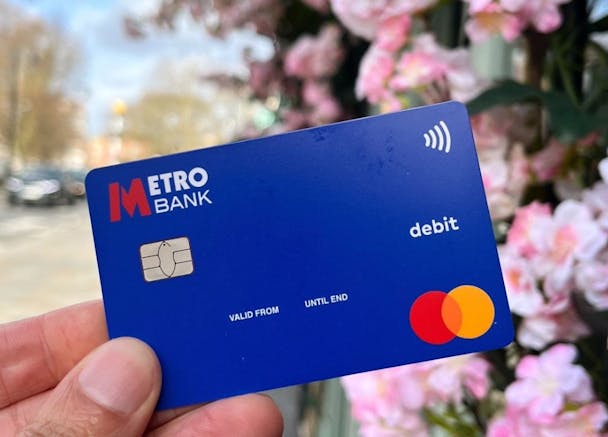Metro Bank filled a gap in the market. Sadly there was not a market in the gap
As Metro secures a last-ditch rescue deal worth £920m - it is led by Colombian billionaire Jaime Gilinski through his investment vehicle Spaldy - Gordon Young looks at the role marketing played in the challenger bank’s woes.

So before we get into the issues plaguing Metro Bank, I ask. When was the last time you went into a bank branch? I haven’t visited one in months, but two of my last visits provided a remarkable contrast.
The first was a visit to the Stratford branch of Santander. The mission was to pay in some Christmas cheques my Scottish in-laws had sent my kids. OK, I could have scanned them, but this was near the end of the lockdown, so anything in person was a novelty.
It was the wrong call. The branch was depressing. The queue is long. Faded plastic fittings and dirty carpet tiles were the design themes. If you could imagine queuing for US immigration in a down-at-heel soft play center, you’d get the picture.
At last, I got to the front, where the teller told me her cheque machine was broken (maybe through lack of use?) and I’d have to queue again at another window.
Advertisement
But then, as I approached the counter a second time, the staff noticed I had a small dog with me. They are not allowed in Santander; I had no idea. But anyway I was asked to leave. Indignant, I promised myself to leave the branch and the bank itself. I had been de-barked! More of that later.
The second experience was at Metro Bank. It was a beautiful branch, with welcoming staff and the smell of coffee; customers could drop by for a cup as they passed. Four-legged friends are welcome, too and are even treated to free biscuits.
No, I was speaking through bulletproof perspex here. I was there to enquire about a mortgage and could meet a real person with the power to decide. The only thing the computer said no to here was bad service.
It’s unsurprising to hear that Metro is rated as one of the UK’s top five banks for customer service. A big deal for a bank that launched in 2010.
Advertisement
But today, one of these banks is on the brink. And it is not Santander. Metro - with 2.7m customers - is having to recapitalize. Many believe this is a challenge too far for the challenger bank.
Metro was getting much right from a marketing perspective - its branding was powerful, its advertising impactful, and its customer service outstanding.
And it also seemed to identify a real gap in the market. However, perhaps it made the mistake of not appreciating there wasn’t a market in the gap.
Launched in 2010, Metro floated in 2016 and opened around 72 branches as the rest of the market closed. The founder, Vernon Hill, believed that’s what the customers wanted. And no doubt, any research would have confirmed that viewpoint.
Suggested newsletters for you
But the problem is that there can be a real gulf between what consumers say and what they want. Three-quarters of adults now use online banking, and according to Which? Fifty-four bank branches close every month. Even those who use extensions tend to use them less than ever.
It explains why the likes of Santander are not investing in their branches - they are relics of the past, the equivalent of those forgotten Japanese units fighting in the jungle years after the war ended.
Going against the grain and opening new branches saddled Metro with costs that burned through capital and expensive leases, complicating a potential sale.
But another failure was the bank probably underestimated how difficult it is to get people to switch accounts. It probably assumed that all those millions of people subjected to woeful service would jump overnight.
However, it turns out that most are like me. Despite promising I was going to move from Santander, I went home and did precisely nothing. I could not be bothered by the hassle and figured I’d never need to go into another branch again. And from an online perspective, Santander is a different proposition.
There is more to this inertia than apathy. People believe switching banks is far more complicated than it is.
But the bottom line is Metro failed to convert its brand positioning and customer service into a sufficient volume of depositors.
This left it dependent on raising cash on the markets to fund lending - a dangerous game in the world of tighter regulations and fractious bond market, as the FT will no doubt explain better than me.
So, what are the lessons here for marketers? Even the best customer service will not suffice if customers don’t want the service. If the strategy is terrible - not even the good guys win.

